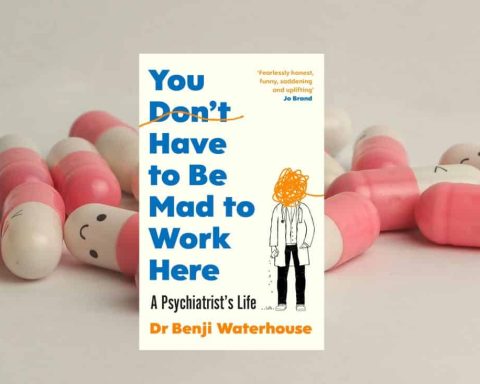 Richard Armitage is a GP and Honorary Assistant Professor at the University of Nottingham’s Academic Unit of Population and Lifespan Sciences. He is on X: @drricharmitage
Richard Armitage is a GP and Honorary Assistant Professor at the University of Nottingham’s Academic Unit of Population and Lifespan Sciences. He is on X: @drricharmitage
I first noticed it in 2018. While working during term time in a university GP practice, the rise of anxiety, depression and self-harm, particularly among younger people, was impossible to miss. Since then, the striking increase in the prevalence of these common mental disorders over the past two decades has been clearly identified, with the highest rate of increase in those aged 16-24.1 Jonathan Haidt – the American social psychologist, New York University Professor, and author of The Happiness Hypothesis (2006), The Righteous Mind (2012), and The Coddling of the American Mind (2018) – sets out to explore the potential causes behind this phenomenon (which is similarly documented across the wider Anglosphere) in his latest book, The Anxious Generation.
These individuals belong to the first generation that went through puberty with near-ubiquitous smartphone ownership…
Haidt begins by documenting the rise is anxiety, depression and self-harm – focusing primarily on the United States but also across other major English-speaking counties and in the five Nordic nations – that has most strikingly affected adolescent and young adults since the early 2010s. These individuals belong to the first generation that went through puberty with near-ubiquitous smartphone ownership, which we now call Gen Z (contrasted with the preceding Millennial generation, which had mostly finished puberty prior to the meteoric rise of smartphones). This “tidal wave” of mental illness affected girls more than boys, and pre-teen girls most of all. He then describes the concurrent widespread adoption of smartphones and the transition of teens’ social lives onto these devices with continuous access to social media platforms, which he identifies as “…the single largest reason for the tidal wave of adolescent mental illness that began in the early 2010s.” He argues that no other theory – such as the financial crisis and the effects of 9/11 – can explain the simultaneous rise in depression and anxiety across so many countries
Haidt then goes on to detail the various profound changes to the architecture of childhood which he argues are responsible for this rise in mental illness amongst young people. These changes include the following: the transition from children’s unsupervised time and free play to highly structured schedules and programmed activities, which impede children’s development of crucial life skills and resilience; overparenting and helicopter parenting, which shelter children from the adversities and failures that constitute a natural and healthy childhood, and which deny children the crucial opportunities to foster resilience, independence, and coping mechanisms for dealing with life’s challenges; the rise of “safetyism” in schools and university campuses, in which students are increasingly shielded from ideas and speech that could potentially be interpreted as offensive or “triggering,” which therefore block the opportunities to develop psychological toughness and to foster analytical skills which consider arguments independently from those that proffer them; and, the constant use of social media, which generates the social pressure to constantly present a perfectly curated life to a (potentially enormous) online platform of followers, while providing an endless supply of comparisons against which children assess their own status. For Haidt, the product of these changes is a paranoid childhood in which young people are constantly monitored, protected, and shielded from manageable adversity and optimally challenging experiences, which leaves them ill-equipped to navigate the inescapable stresses and challenges of everyday life. This inevitably increases their susceptibility to anxiety and depression, which Haidt identifies as the primary cause for the rise of mental illnesses within this group that we see today.
For Haidt, the product of these changes is a paranoid childhood in which young people are constantly monitored, protected, and shielded from manageable adversity and optimally challenging experiences…
Haidt goes on to offer four potential solutions that collectively form a foundation for healthier childhoods in the digital age: no smartphones before high school (roughly age 14), no social media before 16, phone-free schools, and far more unsupervised play and childhood independence. He outlines what parents, school, universities, governments, and tech companies could do to bring about these changes and to begin reversing the damage and prevent subsequent harms inflicted by the recent trends his work has highlighted.
In summary, The Anxious Generation documents a phenomenon which almost certainly has been recognised, tracked and pondered by all practicing GPs, whose workload consists of a substantial and growing prevalence of anxiety and depression, particularly among younger patients. This book harnesses a wide range of sources of empirical evidence to chart this trend, and works hard to convince the reader that the simultaneous changes in parenting, schooling and digital technology usage are linked in a causal rather than merely associative manner. Accordingly, this book is an important and timely read for all general practitioners, as well as parents and those involved in the education of young people.
Featured book: J Haidt. The Anxious Generation. Allen Lane, 2024, ISBN-13: 978-0241647660, £25.00
References
1. J Dykxhoorn, D Osborn, K Walters, et al. Temporal patterns in the recorded annual incidence of common mental disorders over two decades in the United Kingdom: a primary care cohort study. Psychological Medicine 2024; 54(4): 663-674. DOI:10.1017/S0033291723002349
Featured photo taken by Andrew Papanikitas, 2024









[…] to any individual patient. See also: Richard Armitage’s review of The anxious generation here https://bjgplife.com/the-anxious-generation-how-the-great-rewiring-of-childhood-is-causing-an-epidem… see also Daniel James’ Are social media companies the new big tobacco? […]